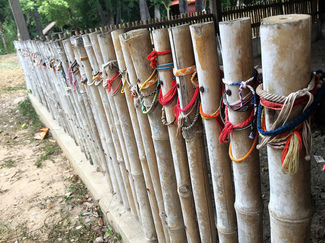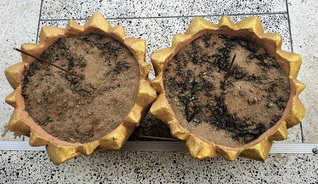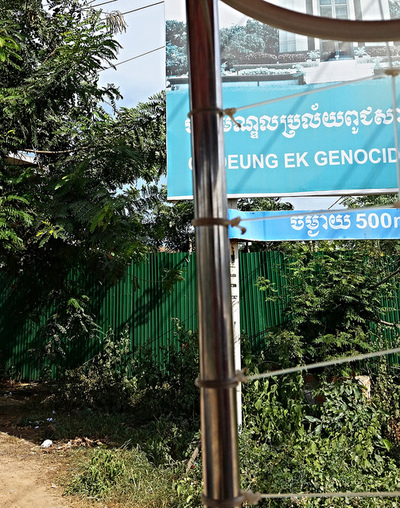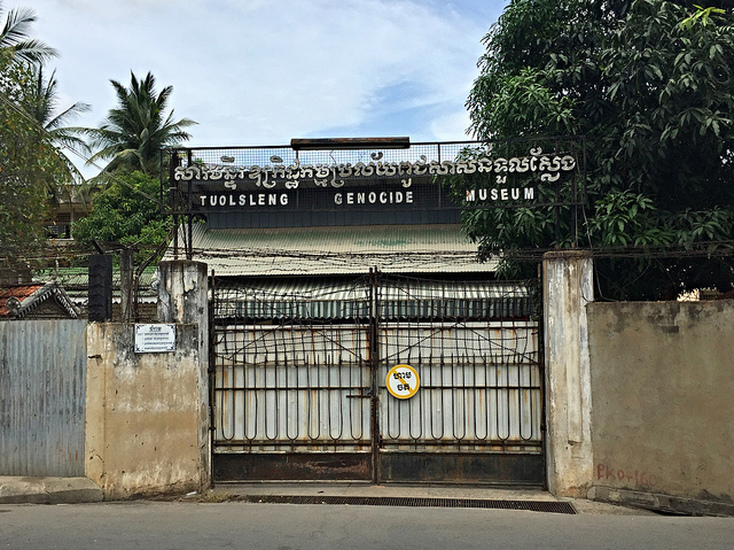|
Shortly after America left Vietnam, when our parents were just younger than we are now, the Khmer Rouge took hold of Cambodia. Pol Pot and his regime sought an agrarian communist utopia, an ideal that quickly vanished beneath the graves of nearly 2 million Cambodian men, women, and children. Adding to the horror of the killing of so many innocent people, is how little most people know about what happened here. Atrocities on par with the Holocaust went on for years, yet until the Vietnamese took over in 1978, nothing was done to stop it. Less than a decade earlier, the United States had dropped millions of tons of bombs over Vietnam, Cambodia, and Laos, but when infants were being beaten into a tree until they were dead, the world was silent. There's a lesson in all of this somewhere, something the people who endured this horrific period hope the world can learn. A lesson in the necessity of kindness, love, and respect for fellow human beings. Ensuring that both individuals and the "powers that be" protect one another from such inhumanity is paramount. Prepared for almost every level of sadness, we planned to visit the Tuol Sleng Genocide Museum and Choeung Ek killing fields in the same day. Yet after only a few minutes at Tuol Sleng, a former high school turned prison in the heart of Phnom Penh, we find there is no way to prepare for something like this. What adds to the pain of a visit to this small complex of buildings where inexplicable horrors took place, is the fact that it was previously a school. A place of learning, growth, and nurture transformed into that of confinement, torture, and death. Most of our time at Tuol Sleng is spent holding back the overwhelming emotion that comes with seeing the thousands of photos of innocent inmates, meticulously documented by the Khmer Rouge in their time of power. Freestanding boards, front and back, fill many of the former torture rooms with images of men women, young children, and even babies. In another building photographs of those who were tortured to death, as the Vietnamese found them in 1978. Finally, in a small room within the building furthest across the two large courtyards from Tuol Sleng’s entrance, incense burns in front of a gold stupa; a memorial to the nearly 20,000 people who passed through this prison, nearly all of whom eventually perished. The images of Tuol Sleng stay with you; impossible to forget. Before heading to Choeung Ek later in the afternoon, we take some time. Time to prepare for even more of Cambodia’s recent brutal history at the killing fields. Only 15 kilometers from Tuol Sleng and the heart of Phnom Penh, down a country road, is a former fruit orchard backed by a small lake. The Khmer Rouge chose this place for its remoteness. An ideal spot to murder any and all who they suspected might threaten or oppose the regime. Unlike Tuol Sleng which sits awkwardly in the middle of the urban and bustling Phnom Penh, Choeung Ek is quiet. A visit here includes an incredible audio guide that respectfully and thoroughly leads us through Choeung Ek and its history. The first thing we notice, an enormous stupa standing in the middle of the fields. A tribute to those who died here, it holds the skulls of nearly nine thousand people tagged with colored stickers to identify the way in which they were killed. Most were brutally beaten with tools such as axes and hoes, some poisoned with chemicals left from the war, others buried alive. Barbaric acts of torture combined with the practicality of saving money on bullets. Further into Choeung Ek, as the audio guide shares more history and stories from those that survived this terrible chapter, pieces of bone and scraps of cloth protrude from the mass graves below. The tragic reality from nearly 40 years ago surfacing again. Both Tuol Sleng and Choeung Ek are brutal, but necessary, places to visit. Once again a lesson in perspective. We haven’t included any photographs of the graves, places of torture, or human remains out of respect for everyone affected. Rather, we’d hope that people will take the time to learn more about what happened here, so we can collectively do everything possible to prevent humanity from similar atrocities in the future. the details:
2 Comments
6/2/2015 10:06:41 am
I visited both of these sites 20 years ago and their impact on me was much like yours. Indelible. It was so hard to see and I felt sick afterward. The small group of us who traveled together stood at Choeung Ek and cried--the others were all jews who had lost families in the holocaust. I came away feeling the importance of letting people know about these atrocities, bearing witness, especially since probably the majority in the West have no idea about what happened there. When I visited, we could not go out at night because Pol Pot was still active and we could hear gunfire all night long. You two will come away from your travels changed forever. And that's a good thing--you will be truly world citizens. xo
Reply
6/6/2015 10:17:17 pm
Wow. We truly can't imagine visiting Phnom Penh 20 years ago. It's unbelievable that Pol Pot went on to live a long and happy life after what he did to so many people - where's the justice? And you're right - most people in the Western world aren't even aware that this happened (neither of us learned about it in school). Unbelievable. This trip will absolutely change us forever. I think it already has.
Reply
Your comment will be posted after it is approved.
Leave a Reply. |
Cohica TravelA travel design agency. Categories
All
Archives
October 2023
Follow us on Instagram @CohicaTravel
|





 RSS Feed
RSS Feed
